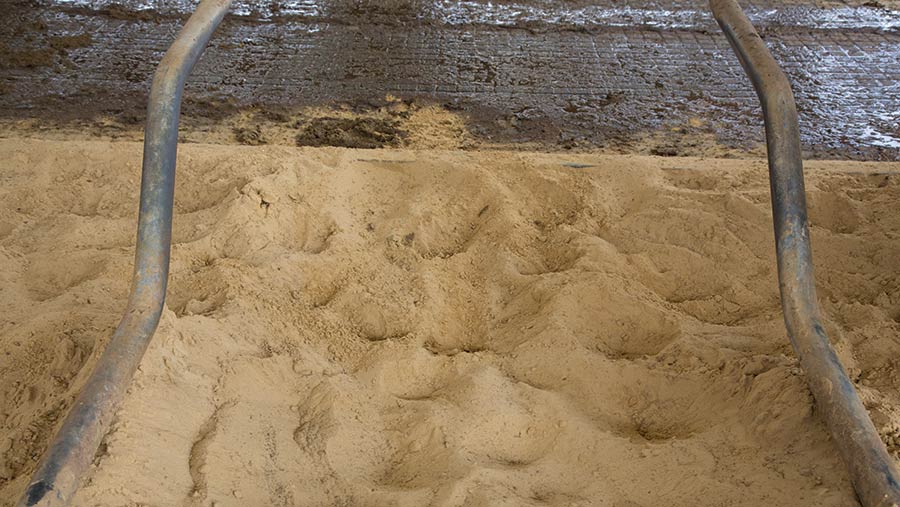Cut in mastitis saves 460-cow herd more than £23,000
 © Tim Scrivener
© Tim Scrivener Adopting five recommendations from the AHDB mastitis control plan has saved a 460-cow herd £23,572 in one year just by reducing the amount of mastitic milk that had to be dumped.
Although this 11,500-litre herd had good health, it was losing more than £69,000/year – or 1.3p/litre – because of clinical and subclinical mastitis, reports the farm’s vet, Bella Cima, from Larkmead Vets in Oxfordshire.
See also: Tips on managing mastitis control programmes
The key to success, she found, was getting the farm team to discuss practical changes they could make within their routine, following analysis of the mastitis cases.
Over the course of 12 months, staff managed to cut the annual mastitis rate from 42 cases in 100 cows to 28. The rolling average cell count also dropped, from 208,000 cells/ml to 158,000 cells/ml.
Housing at the farm is a mix of deep sand cubicles and mattresses topped with sand. Cows graze during the far-off dry period in summer, then transition into sand cubicles.
Automatic scrapers run nine times a day. Heifers are reared at a separate site before joining the far-off dry group.
Data analysis
Bella analysed the farm’s data in the QuarterPRO mastitis tool in spring 2022, observed milking and the parlour routine, and assessed dry cow and heifer environments.
“The mastitis pattern was [of] mixed environmental origin, and freshly calved heifers were shown to be a major issue – 24% were above 200,000 cells/ml at their first milk recording.
“Dry-period-origin cases were significantly worse in summer, suspected to be linked to dry cows following milkers during grazing.”
Focus areas for improvement
Bella discussed the plan’s recommendations with the herdsman and key members of staff, who worked out areas they thought were significant for mastitis control. These included:
- Ensuring slurry scrapers and fans were working whenever possible, and carrying out repairs promptly (this was done but continued to be a challenge)
- Understocking yards when possible
- Using sea sand for bedding, not washed sand
- Carrying out static and dynamic parlour testing every six months
- Changing the dry cow grazing rotation to two weeks of grazing followed by four weeks of rest; fencing off cow camping areas
- Running refresher training in aseptic drying-off techniques
- Looking at storing sand undercover
- Considering options to ensure each teat was cleaned with a clean/fresh part of a laundered towel.
After three months, Bella discovered that the team had managed to implement the first five suggestions. However, they were adamant their biggest success had been in switching to sea sand.
She adds that staff had better control of the dry period, and, after a year, she thinks the changes in paddock rotation will also be influencing results.
